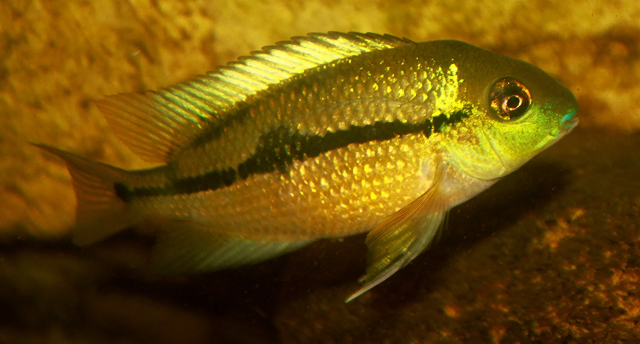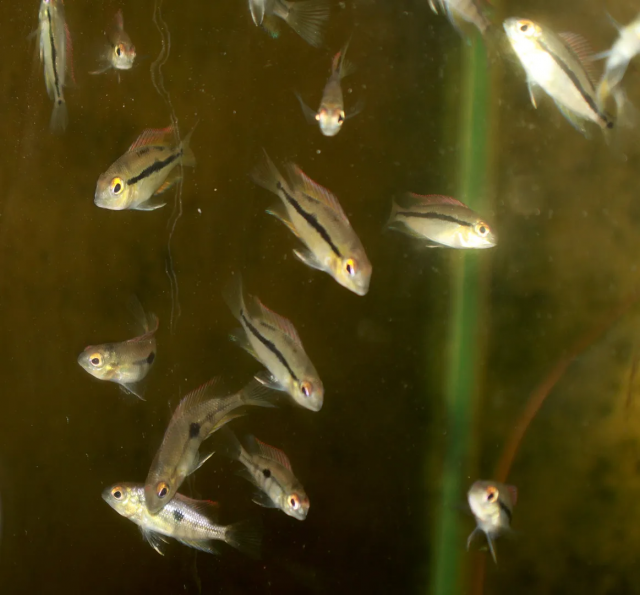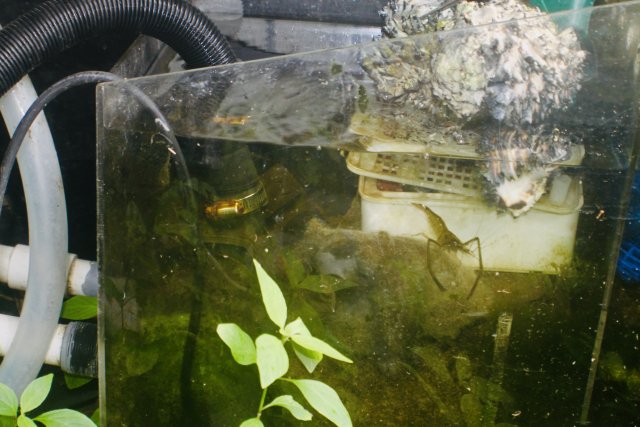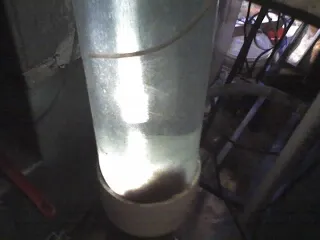Hypsophrys nicaraguensis
- Thread starter Beta splendens
- Start date
You are using an out of date browser. It may not display this or other websites correctly.
You should upgrade or use an alternative browser.
You should upgrade or use an alternative browser.
Hi, pretty common question!
I kept a pair and they were quite mellow, even when breeding, other fish were chased away, but no real damage was done to them.
Very attached to the ground, imo.
They started to shred plants when the male was about 6 and the female about 4,5 inches.
Easy to feed, timid in the beginning somehow.
I kept a pair and they were quite mellow, even when breeding, other fish were chased away, but no real damage was done to them.
Very attached to the ground, imo.
They started to shred plants when the male was about 6 and the female about 4,5 inches.
Easy to feed, timid in the beginning somehow.
thank you.Hi, pretty common question!
I kept a pair and they were quite mellow, even when breeding, other fish were chased away, but no real damage was done to them.
Very attached to the ground, imo.
They started to shred plants when the male was about 6 and the female about 4,5 inches.
Easy to feed, timid in the beginning somehow.
like we know basic care is written down in books, so I Wanna know something more.
I have kept and bred them for a number of years.
They come from hard, mineral rich waters, where pH is usually around 8.
This was my tap water type, so they fit right in.
My water change routine, was between 30 and 40% every other day, and they were grown out as a group of about half dozen in a 75 dal, but mated pairs were moved too 125s at maturity.

Above a female note the lack of spots in the upaired paired fin
Below her is a male, you can tell by the spotting on the unpaired fins
Their eggs are the only non-adhesive eggs produced by a Central American cichlid.


Fry grow quickly, with lots of water changes, and multiple feedings per day.

I prefer to keep species tanks, so hardly ever keep more than one cichlid species togather.
If I do I usually choose a cichlids with a very dissimilar body type, and different shaped mouth, alluding to non-competition for territory and food preference
But....with these, a geographically correct non-cichlid would be my choice of a tank mate, such as a Central American Tetra, or live bearer such a mollies.
Nice are substrate , and lower region of the tank dweller, so picking a tank mate the prefers the mid to upper regions goes far to not competing for their space

They come from hard, mineral rich waters, where pH is usually around 8.
This was my tap water type, so they fit right in.
My water change routine, was between 30 and 40% every other day, and they were grown out as a group of about half dozen in a 75 dal, but mated pairs were moved too 125s at maturity.

Above a female note the lack of spots in the upaired paired fin
Below her is a male, you can tell by the spotting on the unpaired fins

Their eggs are the only non-adhesive eggs produced by a Central American cichlid.


Fry grow quickly, with lots of water changes, and multiple feedings per day.

I prefer to keep species tanks, so hardly ever keep more than one cichlid species togather.
If I do I usually choose a cichlids with a very dissimilar body type, and different shaped mouth, alluding to non-competition for territory and food preference
But....with these, a geographically correct non-cichlid would be my choice of a tank mate, such as a Central American Tetra, or live bearer such a mollies.
Nice are substrate , and lower region of the tank dweller, so picking a tank mate the prefers the mid to upper regions goes far to not competing for their space

Last edited:
thank you.I have kept and bred them for a number of years.
They come from hard, mineral rich waters, where pH is usually around 8.
This was my tap water type, so they fit right in.
My water change routine, was between 30 and 40% every other day, and they were grown out as a group of about half dozen in a 75 dal, but mated pairs were moved too 125s at maturity.
View attachment 1508312
Above a female note the lack of spots in the upaired paired fin
Below her is a male, you can tell by the spotting on the unpaired finsView attachment 1508311
There eggs are the only non-adhesive eggs produced by a Central American cichlid.
View attachment 1508313View attachment 1508314
Fry grow quickly, with lots of water changes, and multiple feedings per day.
View attachment 1508315
I prefer to keep species tanks, so hardly ever keep more than one cichlid species togather.
If I do I usually choose a cichlids with a very dissimilar body type, and different shaped mouth, alluding to non-competition for territory and food preference
But....with these, a geographically correct non-cichlid would be my choice of a tank mate, such as a Central American Tetra, or live bearer such a mollies.
Nice are substrate , and lower region of the tank dweller, so picking a tank mate the prefers the mid to upper regions goes far to not competing for their space
View attachment 1508316
thank you.
like we know basic care is written down in books, so I Wanna know something more.
So I suggest to ask EXACTLY what you want to know.
And my answer is personal experience.
But, and here comes basic, written book stuff: they don't do well in acidic water.
You know character how they do in community tank.So I suggest to ask EXACTLY what you want to know.
And my answer is personal experience.
But, and here comes basic, written book stuff: they don't do well in acidic water.
I know at cichlids it depends on character too.
My experience was that they were not very aggressive.
My experience was that they were not very aggressive.
If I had your type water, I'd keep them in a tank with an aragonite or crushed oyster shell substrate, or barring that possibility I'd run a fluidized bed filter, more as a reactor with aragonite as a buffer, or run a sump with sea shells or oyster shells under a water flow to act as a buffer.sadly mine water PH is 6 to 7.

Below a DIY fluidized bed reactor using aragonite as media.

Or....
I'd find a South American alternative, or...
If your tank is mixed geographically,
the African genus Pelviachromis is very similar appearing, soft water, lower pH alternative.


